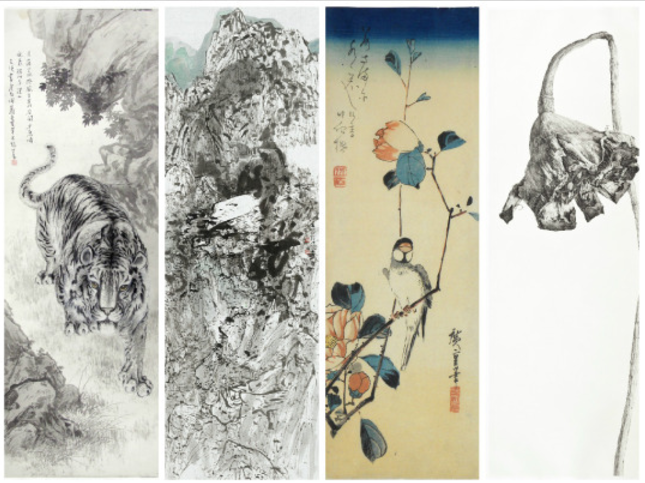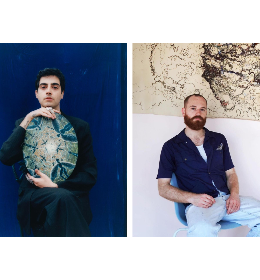Contemporary and traditional fusion
Forty-two Asian art specialists — some New York-based, others in town for the week — produced exhibitions for the public. M. Sutherland Fine Art, headquartered in a brownstone on East 80th Street on the Upper East Side, gave us "Contemporary Ink". The show brought together pieces from eight artists, whose techniques meld a respect for traditional Chinese treatments and practices with contemporary sensibilities. Kapoor Galeries Inc.’s "Realms of Existence" exhibition united Buddhist and Hindu sculptures and paintings dating from the 2nd through the 19th centuries. Organizers and dealers alike have been quick to note that this is not an art fair. And though the lack of a centralized location may make navigation a bit complicated for some, the city-wide setting certainly proves advantageous in many ways. “The intimacy of a gallery is different than being on a floor in a big room,” Carol Conover, director of Kaikodo Asian Art and Asia Week’s chairwoman, told the Times.
Auction houses cash in
Bonhams, Christie’s, Sotheby’s and Doyle presented dozens of auctions of Asian art throughout the week. As Happening reported, the five-day sale of the estate of collector Robert Hatfield Ellsworth at Christie’s realized over $131 million. Considered one of the finest private collections of Asian art ever assembled, its sale attracted many important collectors and was a major coup for this year’s Asia Week.

From left to right: China 2000 Fine Art, Pu Ru and An Ho, Prowling Tiger, (c.1955); M. Sutherland Fine Arts, Ltd., Hsu Kuohuang, The Pen Follows Where the Mind Wanders, no.1 (2013);
The Chinese Porcelain Company, Zhao Xu, Lotus Pod II (2014); Scholten Japanese Art, Utagawa Hiroshige, Java Sparrow and Camellia (Circa 1830s).
Institutions show support
The Brooklyn Museum, the Asia Society, the Japanese Art Society of America and many others produced exhibitions on myriad artists, subjects and historical periods. At the Guggenheim, "On Kawara - Silence" is on view through May 3. Billed by the museum as “the first full representation of Kawara’s output,” the retrospective show, organized with the artist’s cooperation, dominates the building’s winding Frank Lloyd Wright rotunda. Right down the street, seven temporary exhibitions on Asian art are currently on view at the Metropolitan. From "Inventing Korea: 100 Years of Collecting at the Met" to "Sacred Traditions of the Himalayas", the shows highlight both notable collections and developments in topical scholarship.
The Big Apple looks East
This year’s enthusiasm for Asian art - both financial and academic - speaks to a renewed focus on a market that had been lagging in New York for some time. (The International Asian Art Fair, formerly held at the Park Avenue Armory, went extinct in 2008). And with the impressive results of this year’s Art Basel Hong Kong, and new museums popping up all across Asia, it appears the world's gaze is continuing to turn east in search of both art and a new breed of collectors. The old guard, well-established markets of Europe and America just may have a rival in their midst.









